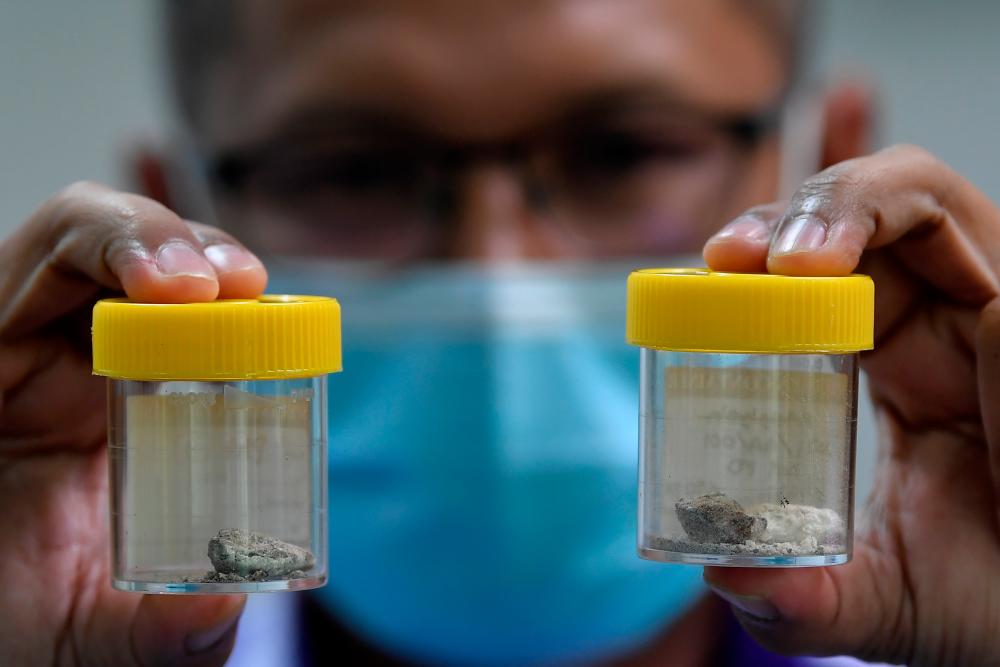KUALA TERENGGANU: The Terengganu State Fisheries Department today confirmed that the lumpy object found by a woman while fishing in Marang waters at the end of November was not whale vomit (ambergris, a digestive secretion of sperm whale).
Its director Ruzaidi Mamat said that his team had taken a sample of the lump the woman found on Dec 15 for analysis at the Universiti Malaysia Terengganu laboratory.
He said the results of the researchers from the Fisheries Research Institute (FRI) Rantau Abang, Dungun and UMT found that the object was not whale vomit because it did not show the presence of three active ingredients, namely ‘amber’, ‘epicoprosterol’ and ‘coprostanone’ in it.
“On the other hand, the content found in the sample showed it was formed from the accumulation of organic matter such as fatty acids and then congealed into a slightly fibrous biomass.
“Scientifically, the highest percentages contained in the lump are Pyrazole (94.56 per cent) and Pyrrole (3.34 per cent),“ he said in a statement today.
On Dec 14, the media reported that a woman from Kemaman found the lump believed to have been secreted by a whale while fishing near the Malaysian Fisheries Development Authority (LKIM) Marang jetty at sometime at the end of November.
Following that, the Terengganu State Fisheries Department went to the woman’s house the next day to take some samples for laboratory analysis to see whether it was really a rare find of whale’s vomit or just a lump of debris or biomass carried by the waves.
Commenting further, Ruzaidi said as soon as the official decision was released yesterday morning, a discussion between the Malaysian Fisheries Department and UMT was held and the decision was also confirmed by Universiti Malaysia Terengganu (UMT) Research and Field Services Centre (PPPL) director Assoc Prof Dr Hasrizal Shaari.
“Thermal analysis was also carried out to find out the melting point of the lump found. Through the analysis, the melting point was 76.04˚C while the melting point of pure ambergris is 82.32˚C.
“The claim that the lump emitted a fragrant odour is assumed to be from the 1H-Pyrazole material present in it and this material has an heterocyclic ring structure and will emit an odour or aroma when burned,“ he said.
In Malaysia, UMT is the only university that is able to verify the authenticity of ambergris samples based on the expertise of PPPL which is also assisted by experts at the Faculty of Science and Marine Environment UMT and the University of Plymouth in England.
Commenting on the issue of international trade for whale vomit, Ruzaidi said it was subject to Act 686, which is International Trade in endangered species and requires a permit from the Convention on International Trade in Endangered Species of Flora and Fauna (CITES) from the Malaysian Fisheries Department.
“Without the permit, any party involved can be sentenced to imprisonment not exceeding seven years or fined not exceeding RM100,000 or both,“ he said. — Bernama













